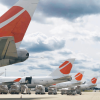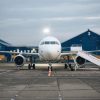Aircraft leasing has gone from being a niche investment category to a mainstream field, with more money, opportunities and competition. Lessors are ardent about the rising demand for aircraft, global air traffic continues to grow and as new funding sources are required to be sourced by the industry even faster. But what is the investment worthiness of the aircraft leasing market now?
The size and stature of aircraft leasing market
According to a recent study published by Market Research Future, the share of leased aircraft in the global fleet has increased from just 2% in 1980 to around 40% within three decades. This means that today, at least every third aircraft is owned by a leasing company or other lessors. Predictions take the trend further – that by 2020 more than half of all aircraft in airline service globally will be supplied by leasing companies. Moreover, according to the study, the aircraft leasing market is expected to be worth $62,221.8 million by 2023, reaching a Compound Annual Growth Rate (CAGR) of 4.75%.

The development of the global aircraft leasing market.
The increasing trend to lease aircraft correlates to the robust growth of global air traffic and the need for new funding sources to be procured by the industry. The International Air Transport Association (IATA) now predicts 7.8 billion passengers to travel in 2036, which is based on 3.6% average CAGR. The outlook for the future of the global aircraft fleet is just as robust. Here, IATA forecasts an estimated demand for up to 40,000 new aircraft in the next 20 years with the required investment of $5.6 trillion.
However, the rise of aircraft leasing supposes that the main long-term issue for lessors is managing fleet age. Regarding that, the situation in the market is quite uncommon at the moment, observes Mr. Jonas Juodagalvis, Vice President of Transactions at AviaAM Leasing – an aviation leasing company recognized by Airfinance Journal among the 50 most profitable aviation leasing companies three years in a row in 2017. According to him, “New generation aircraft deliveries are growing constantly, but renewed airlines fleet displaces older aircraft and fills market with mid-life offers.”
Indeed, statistics show that world's leading aircraft leasing companies tend to favour younger aircraft. According to Ascend data, the weighted average (WA) of lessor-owned fleets was 7.4 years in 2017, while the age of the overall global commercial aircraft fleet was 11 to 12 years. Some big players, such as AerCap, Avolon, BOC Aviation, Aviation Capital Group and Air Lease Corporation, have opted for brand new aircraft, for instance, Air Lease’s average fleet age is 3.7 years. The reason? There is less residual value risk and no need for large maintenance expenses.
However, as Mr. Juodagalvis explains, “Despite the fact that new generation aircraft liquidity is very good, lessors can’t expect a high ROI. Meanwhile, the ROI of the end-of-life aircraft is small, but stable,” he points out. “As for mid-life aircraft, situation is not that favourable as it was 10 years ago. Aircraft will have to be re-evaluated according to their residual value and it will obviously make an impact for both liquidity and the ROI in the upcoming future.”
The potential of investments into aircraft leasing
While need for lease financing increases, what ARE the returns to be made in this market? Well, investment in operating leasing has shown to have lower volatility than many other investment categories, as well as stable and long-term returns, which, according to Mr. Rob Morris, Global Head of Consultancy at Flight Ascend, “even unleveraged can be in the high single or low double digits on an annual basis.” In fact, attractive absolute returns and asset diversification attributes are the main benefit of aircraft leasing. Investments in aircraft require a high capital commitment, however, leases enable to deploy large amounts of this capital efficiently.
Currently, there is an increase of capital seeking to invest in commercial aircraft operating leasing, Mr. Morris observes, and “there are strong drivers to this,” he assures. Take, for instance, the Russian market – “it is experiencing a significant rise of operating lease and aircraft operating lease in particular, which in turn requires the relevant growth of investment”, says Mr. Ivanter Dmitry, General Director of VTB Leasing.
“Experts estimate the growth of passenger turnover by a factor of 1.6 to 338 bln. passenger kilometres by 2026 and of 2.2 to 484 bln passenger kilometres by 2036 (UAC Market review for 2017-2036, Russia),” Mr. Dmitry indicates. “Pursuant to the same data, estimated growth of total Russian fleet will be nearly 1,200 aircraft up by 2036 with its approximate value in the amount of US $135 bln (based on 2017 prices) the most part of which will be financed by operating lease due to current trends.”
Taking a broader look at the geographical spread, at the moment, the majority of lease rental capital is still coming from Europe, where 34.7% of lease rental income originated in 2016, according to PWC analysis. However, Asia, which held 32.6% share in 2016, is set to reach 36.9% by 2021, thus outpacing Europe (projected to account for 31.5% in 2021) and other regions.
The risks and rewards of investment into aviation
It is safe to say that despite the different types of aircraft assets, there are returns to be made in all areas. “There are better returns probably in the middle-life and end-of-life assets, but behind better returns is higher risk. There’s much more volatility in mid-life and end-of-life aircraft, they’re more vulnerable to downturns,” says Mr. Les Weal, co-founder of Oriel Aircraft Valuations, the sole provider of aircraft valuation and lease rate data to the Centre for Aviation (CAPA). “At the moment the mid-life assets and end-of-life assets are in strong demand, particularly the end-of-life used material to service the active fleet. Some airlines still see there is a lot value in mid-life aircraft, particularly and not until very recently, due to the low fuel price environment affecting that group of aircraft,” Mr. Weal observes.
Although the aircraft leasing market is a stable and profitable industry, investing into it nonetheless demands at least a certain level of expertise. The commitment to invest into aircraft leasing requires keeping an eye on the upward economical and industry-wide trends, and determining a good time to invest. “No one can make an investment without an adrenaline rush,” says Mr. Fahad Altaher, founder of Aerospace Content Branding (ACB), the Jordan, Amman-based company specializing in aerospace industry research and communications. According to him, the way to guarantee success in this market is by “making a well calculated risk with an appropriate business plan that has a decent marketing mix with a healthy branding strategy on top of a rigorous technical planning capability.” Surely, the way to guarantee returns of investments into aviation is by following the best practices and assessments of industry professionals.





